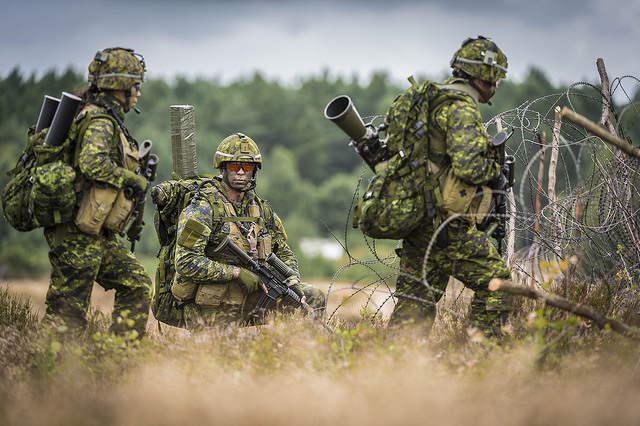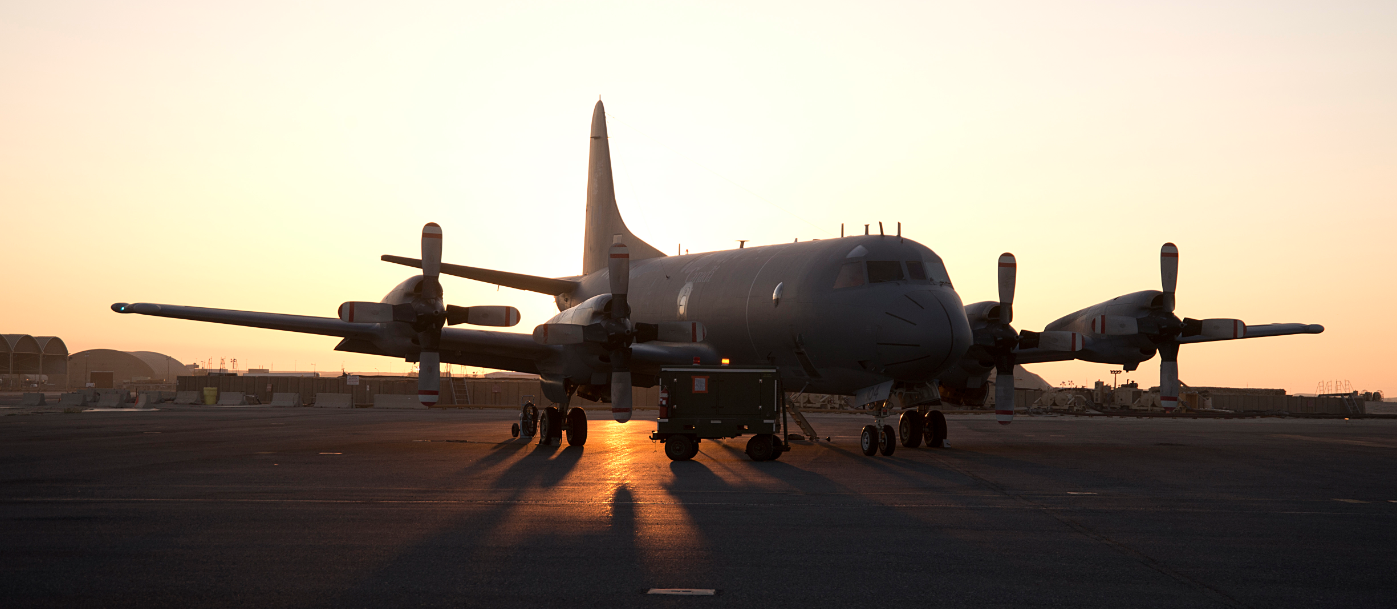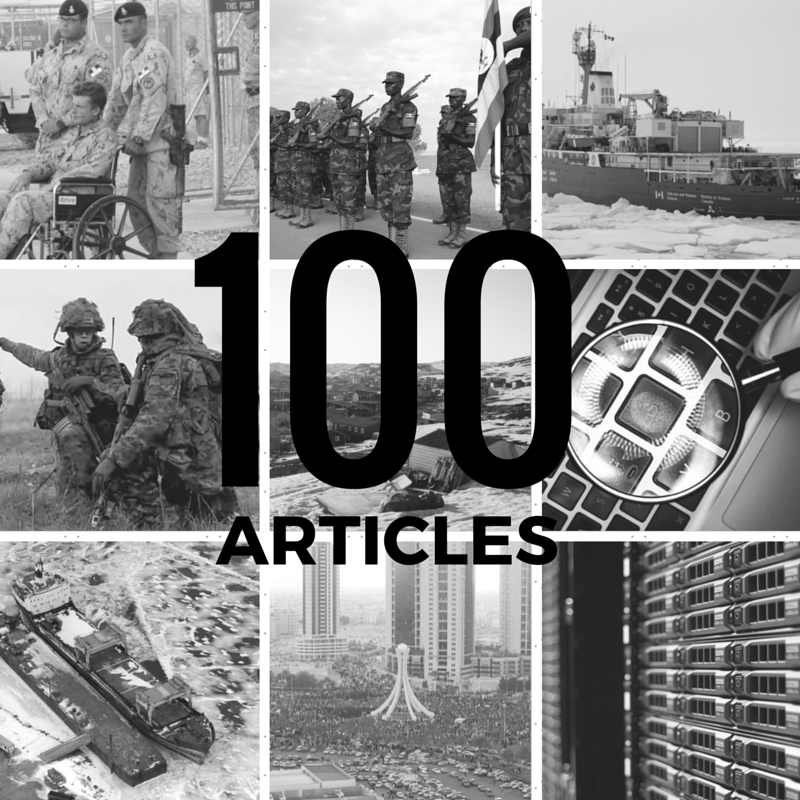Following Russia’s annexation of Crimea in February 2014, NATO member States quickly responded with reassurance measures to demonstrate committed support to Alliance members in Eastern and Central Europe. The crisis and war that erupted in eastern Ukraine intensified fears of further Russian aggression. By April 2014, NATO had agreed to begin implementing a series of military measures to reinforce regional collective defense.
Operation REASSURANCE began in 2014 and is the name of the CAF deployment contributing to the NATO measures. By May 2014 the CAF had deployed six CF-18 Hornets to join the Air Task Force, 200 soldiers to join exercises of the Land Task Force, and HMCS Regina joining the Maritime Task Force. At the Wales Summit in September 2014, the Alliance would adopt the Readiness Action Plan (RAP) to ensure swift and firm reactionary forces were prepared to respond to any crisis threatening the region. The RAP relies on a Very High Readiness Joint Task Force (VJTF) consisting of between 4,000 and 6,000 soldiers prepared to move to the frontline “within a few days.”
At the Warsaw Summit in July 2016, NATO members agreed to deploy military forces to the Baltic States and Poland beginning in January 2017. These efforts were to deter further Russian aggression as experienced in Crimea and eastern Ukraine. The Alliance agreed to deploy four battalions totaling between 3,000 and 4,000 troops. Leadership roles were taken by the United Kingdom in Estonia, Canada in Latvia, Germany in Lithuania, and the United States in Poland. The majority of the armed forces will arrive by May this year, though deployments have already commenced with 1,000 U.S. soldiers arriving in Poland earlier this month. The Canadian commitment to lead the 1,000-strong battle group in Latvia will involve multiple rotations of 450 CAF troops, light armored vehicles, and other military equipment to arrive this spring. It will include support from the armed forces of Albania, Italy, Poland, and Slovenia. The Canadian Government has committed $350 million to the mission over the next three years.
The fundamental nature of NATO operations in the region have transformed from reassuring commitments to regional members, to deterrent operations dedicated to opposing future Russian threats. Current Chairman of the NATO Military Committee Gen. Petr Pavel warned that the three Baltic States were vulnerable and could be “occupied in a couple of days,” considering the number of Russian forces compared to in-state defense forces guarding against invasion. These concerns were echoed in a report detailing simulations by the RAND Corporation claiming NATO would have only “highly unattractive options” to respond to Russian forces overrunning the Baltic States in two or three days.
Additional concerns relate to the strategic disadvantage posed by the geography of the Baltic States in comparison to the location of other NATO members. The Suwalki Gap is a 60-mile stretch of land between Kaliningrad and Belarus, a Russian ally. The border between Lithuania and Poland, connected at this gap, is the only shared border between the three Baltic States and other NATO members. Concerns have been raised over Russian invasion cutting off this border and thereby cutting off the three Baltic States. The four NATO battalions are an important deterrent presence within the Baltic States to curtail further Russian aggression.
The military buildup in the region since 2014 will mark the biggest since the end of the Cold War, and is observable on both sides of the Russian border. The Kremlin has announced the formation of three new military divisions consisting of 10,000 soldiers each, along with plans to spend 20 trillion rubles (about $313 billion) on defense upgrades through 2020. Russia has placed Iskander missiles in its Kaliningrad exclave capable of carrying nuclear weapons.
Russia has employed unconventional tactics in its aggression in Crimea and eastern Ukraine, with examples involving cross-border communication targeting Russian-speaking populations and motivating separatist movements in Donetsk and Luhansk to escalate into armed conflict with government forces. This is concerning as all three Baltic States have Russian-speaking populations. Latvian Foreign Minister Edgards Rinkevics has spoken of attempts to influence populations living in Latvia, where Russian and Latvian-speaking broadcasters “denigrate the European Union and compare living standards there unfavorably to those in Russia”, in order to generate a sense of popular disillusionment with the political status quo thus motivating the populations to seek alternatives favorable to Russian interests. Luis Simon of the Institute of European Studies describes the strategy as an attempt to “undermine the self-confidence and political morale of target countries.”
The Warsaw Communique directly condemning “Russia’s aggressive actions,” and NATO deterrence operations increasing military presence in the region may influence relations between Russia and NATO member states on other fronts, like the Arctic. The challenge of the Alliance in the future will be to maintain dialogue with Russia on other areas that require cooperation, while maintaining important deterrence measures to prevent further aggression in Eastern and Central Europe.
Photo: Canadian Forces infantrymen training in Poland during Operation REASSURANCE (2015) by Canadian Forces Combat Camera via Flickr. Photo courtesy of the Canadian Forces.
Disclaimer: Any views or opinions expressed in articles are solely those of the authors and do not necessarily represent the views of the NATO Association of Canada.




